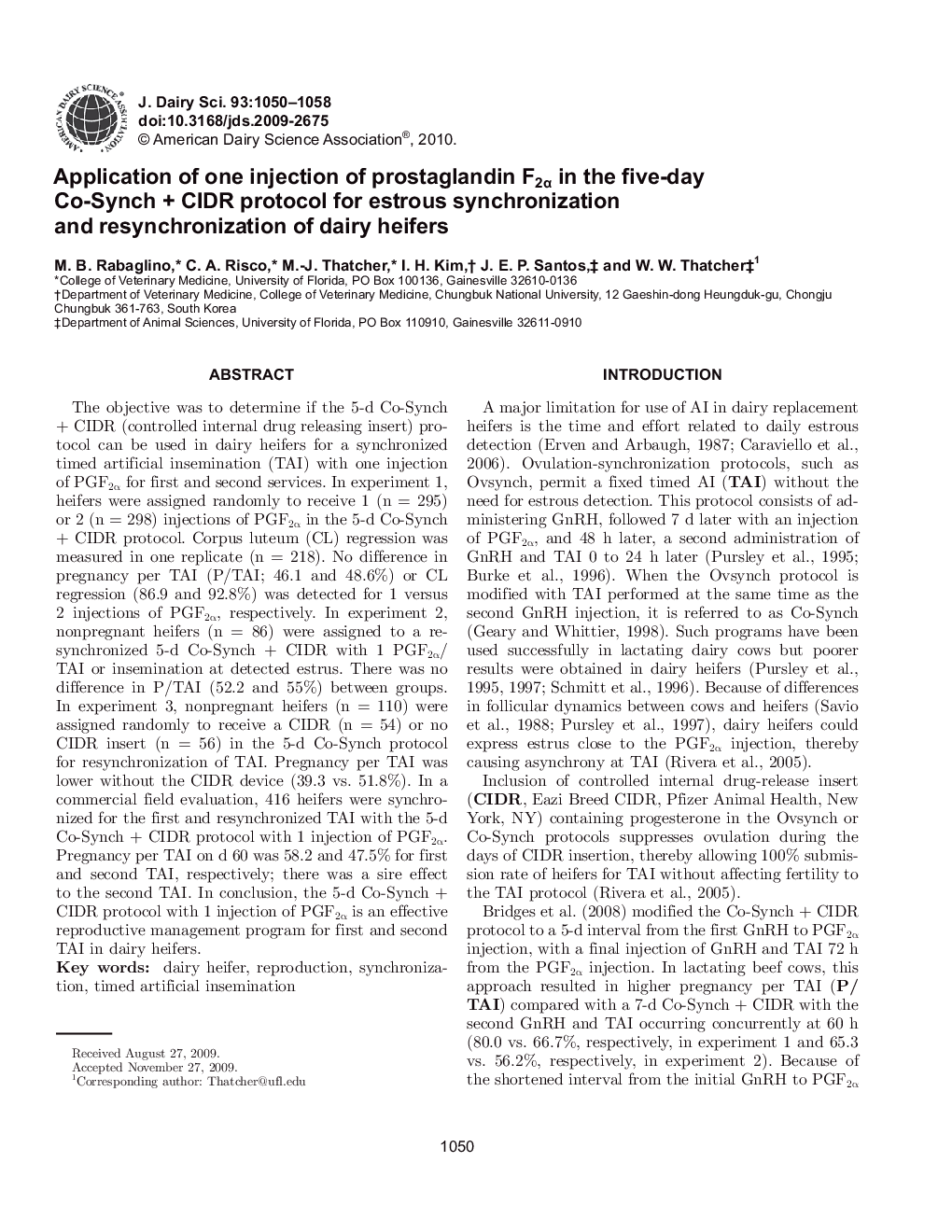| Article ID | Journal | Published Year | Pages | File Type |
|---|---|---|---|---|
| 10981842 | Journal of Dairy Science | 2010 | 9 Pages |
Abstract
The objective was to determine if the 5-d Co-Synch + CIDR (controlled internal drug releasing insert) protocol can be used in dairy heifers for a synchronized timed artificial insemination (TAI) with one injection of PGF2α for first and second services. In experiment 1, heifers were assigned randomly to receive 1 (n = 295) or 2 (n = 298) injections of PGF2α in the 5-d Co-Synch + CIDR protocol. Corpus luteum (CL) regression was measured in one replicate (n = 218). No difference in pregnancy per TAI (P/TAI; 46.1 and 48.6%) or CL regression (86.9 and 92.8%) was detected for 1 versus 2 injections of PGF2α, respectively. In experiment 2, nonpregnant heifers (n = 86) were assigned to a resynchronized 5-d Co-Synch + CIDR with 1 PGF2α/TAI or insemination at detected estrus. There was no difference in P/TAI (52.2 and 55%) between groups. In experiment 3, nonpregnant heifers (n = 110) were assigned randomly to receive a CIDR (n = 54) or no CIDR insert (n = 56) in the 5-d Co-Synch protocol for resynchronization of TAI. Pregnancy per TAI was lower without the CIDR device (39.3 vs. 51.8%). In a commercial field evaluation, 416 heifers were synchronized for the first and resynchronized TAI with the 5-d Co-Synch + CIDR protocol with 1 injection of PGF2α. Pregnancy per TAI on d 60 was 58.2 and 47.5% for first and second TAI, respectively; there was a sire effect to the second TAI. In conclusion, the 5-d Co-Synch + CIDR protocol with 1 injection of PGF2α is an effective reproductive management program for first and second TAI in dairy heifers.
Related Topics
Life Sciences
Agricultural and Biological Sciences
Animal Science and Zoology
Authors
M.B. Rabaglino, C.A. Risco, M.-J. Thatcher, I.H. Kim, J.E.P. Santos, W.W. Thatcher,
